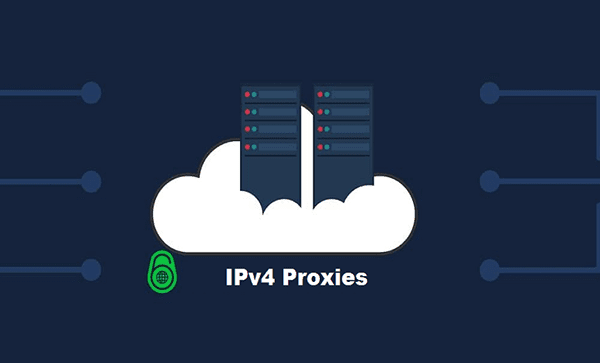
Proxies help users access the internet without revealing their identity or location. And since there are two versions of the internet protocol, two types of proxies exist—IPv4 and IPv6.
As the names suggest, IPv4 proxies are compatible with IPv4. IPv6 proxies, on the other hand, work with IPv6 but also translates IPv4 to IPv6. Each proxy type has pros and cons, which you should consider before choosing a proxy.
But despite IPv6 being an upgrade for IPv4, the latter remains the most adopted internet protocol. So, if you’re looking for an IPv4 proxy, this article explains what you should know about it.
Table of Contents
What is an IPv4 proxy?
An IPv4 proxy is a device with IPv4 addresses. These proxy addresses can either be data centers or residential devices. ‘v4’ in IPv4 means the protocol is the fourth version, of which the first three were for testing purposes in the late 70s and early 80s. The internet meant for the public kicked off with IPv4 in 1983 and has since remained prominent despite IPv6’s launch in 2012.
IPv4 proxies have addresses divided into four parts by dots, with each part containing numbers that can range from 0 to 255. This numerical range constraint caused the maximum number of IPv4 addresses to be 4,294,967,296.
IPv4 proxies are popular and are most suitable for individuals looking to safely surf the internet without worrying about their data. Organizations and businesses can also use IPv4 proxies in market research, SEO monitoring, cybersecurity, and more.
The performance of IPv4 proxies depends on the provider. Hence, be sure to buy your IPv4 proxy from a trusted provider. Diligently look through the features of the proxy the provider is selling to ensure it meets your needs.
How do IPv4 proxies work?
An IPv4 proxy server works by serving as an intermediate for web requests and responses between users and servers. Typically, users access the content on the internet by sending a direct request to a destination server from the browser. The destination web server receives and processes the request and then sends a response displayed on the user’s browser.
However, once a proxy server comes into the picture, the user’s request first goes to the proxy server. Then, the proxy server changes the IP address attached to the request and sends it to the destination server. The server processes the request and sends it back to the proxy before it finally heads back to the user’s browser. IPv4 proxies can also be used as firewalls and filters to protect organizational servers.
Proxy Types and Their Classification
Forward Proxy Server
This basic proxy type passes users’ requests in an internet network through a firewall to the internet. These proxies either ‘allow’ or ‘deny’ requests based on pre-configurations. Forward proxy servers also confirm the caching of the requested info before getting it from the server. The server then stores the cache. When the user needs the specific info again, they don’t have to make another request to the server.
Reverse Proxy Server
These proxies function as a direct reverse of forward proxy server, as the request comes from the internet through a firewall to the user. Server owners set up these proxy types to restrict unsolicited server access.
Anonymous Proxy Server
There are three levels of anonymous proxy servers:
- High anonymity proxy server (Level 1): These servers offer users the highest degree of security. They hide the user’s IP address and don’t let web servers know they are proxies.
- Anonymous proxy server (Level 2): These servers hide the user’s IP address, and tweak (changes geolocation) its IP address for further anonymity.
- Transparent proxy server (Level 3): These are commonly used by public organizations, public libraries, schools, etc., as they do not hide users’ IP addresses.
Protocol Proxy Server
There are several types of protocol proxy servers. These are:
- HTTP proxy server
- HTTPS proxy server
- SOCKS proxy server
- SIP proxy
- SMTP proxy server
- FTP proxy server
- DHCP proxy server
- DNS proxy server
- Smart DNS proxy server
- CGI proxy server
Access Proxy Servers
There are two types of access proxy servers, which are;
- Public proxy servers are free proxies that anyone on the internet can use. Everyone has access to the same IP address pool if the users aren’t particular about security.
- Private proxy servers are proxies providing exclusive access to allotted IP addresses.
IP Location Proxy Servers
There are two types of IP location proxy servers:
- Datacenter proxy servers
- Residential proxy servers
Comparing IPv4 proxy to IPv6 proxy
The major differences between IPv4 and IPv6 proxies are based on their compatible protocols. Being an upgraded version, IPv6 offers better performance, security, and cost-effectiveness.
Also, IPv4 addresses are dot-decimal, which makes them less suitable for mobile devices. IPv6 addresses, on the other hand, use colons and hexadecimal, which make them better suited for mobile devices.
Use cases of IPv4 proxies
Here are some of the main use cases of IPv4 proxies:
- SEO Monitoring
- Social media monitoring
- Data gathering
- Ad verification
- Alternative data collection
Conclusion
IPv4 proxies are still the most widely used, and the reality will remain the same for the foreseeable future. The popularity of IPv4 proxies makes it easy to get support when there’s an issue. Hence, IPv4 is a preferred choice over the IPv6 proxy.

